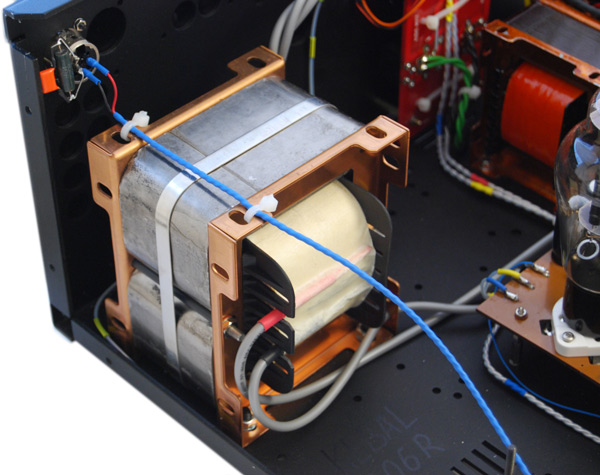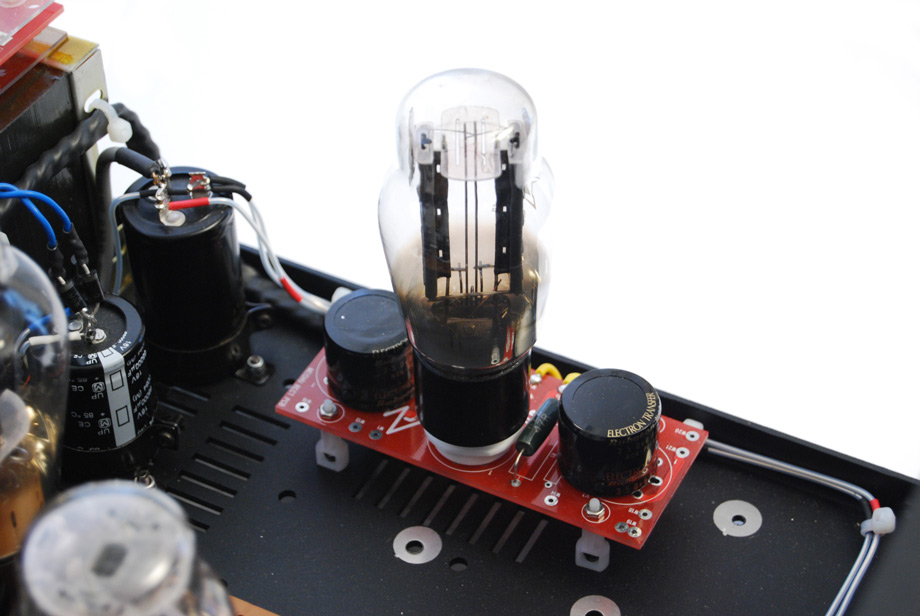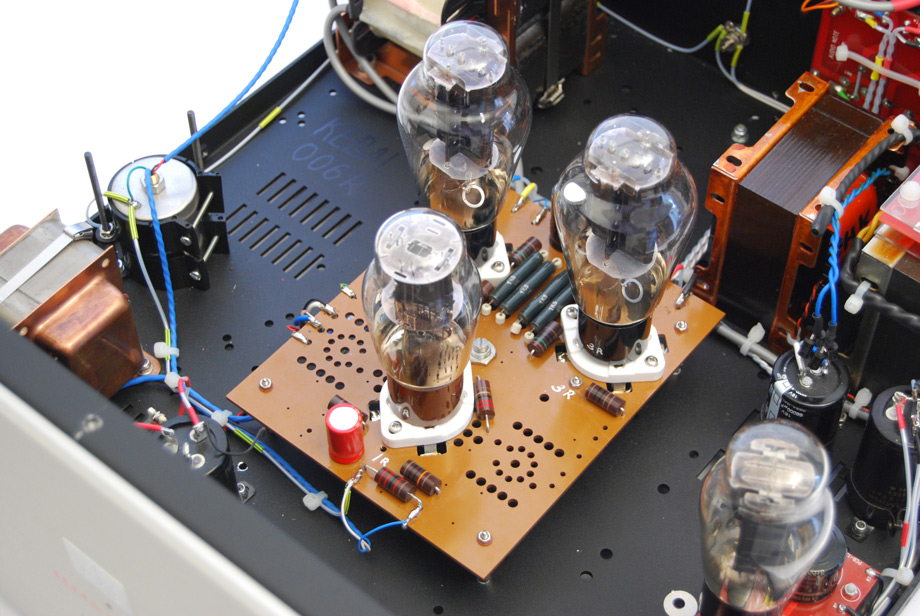Control
The KBs do an excellent job of controlling the bass of the Triolons, but do sound very different from high powered transistor amps. The bass of the KB is fuller, warmer, and carries more natural bloom, yet they also sound somewhat less damped. The KBs do an excellent job of differentiating drum heads, exhibiting a tonal richness and complexity, coupled with the ability to differentiate timbre, that is a hallmark of single-ended triodes. Their ability to control the transducer, particularly dynamic drivers, is one of their defining characteristics. By this, I mean their ability to start, rapidly accelerate, and stop the movement of the driver which translates into added clarity and temporal coherence. While there are transistor amps that can do this, almost all of them truncate decay and sound over damped.
Likewise, there are tube amps that get the decay right but soften the leading edge. The KBs are able to reproduce the leading edge without any truncation of the reverberant tail. On the Roger Waters CD Amused to Death, the third track begins rather quietly, then out of nowhere there is the sound of an ax hitting a block of wood. The effect, if properly reproduced, will literally cause the listener to jump. This requires an amp that has both excellent dynamic range and the ability to create a very well defined leading edge. The KBs in combination with the Triolons are explosive!
Human Voice
The Kegon Balanced’s reproduction of human voice is superb in the way that it conveys nuance and emotion. The midrange and lower treble are particularly natural, rendering male voices with a vibrant warmth and richness that is seductive. For example, Dietrich Henschel (baritone) on Harmonia Mundi’s production of the orchestrated versions of a group of Hugo Wolf’s songs (Promethius) has a reach-out-and-touch presence. He alternates songs with Julianne Banse (soprano), whose voice comes through with sparkling clarity, devoid of any electronic artifact. Similarly, Luciano Pavrotti is absolutely breathtaking, as is Marilyn Horne singing in the Metropolitan Opera’s production of Carmen for DGG (Bernstein conducting). With many amps, voices are two-dimensional, lacking any suggestion of the singer’s chest cavity and diaphragm, but not with the KBs. Intelligibility is also outstanding. This was particularly noticeable in listening to the third track of Roger Water’s Amused to Death.
Soundstage
Soundstage varies from recording to recording, but with the Kegon Balanced, there is absolutely no tendency for parts of the frequency range to localize on the horns unless they are overdriven. This is important because coherency is difficult to achieve with the Triolons. These horns’ level of transparency is so high that they ruthlessly reveal any anomalies in associated equipment, particularly the amplifiers. The combination of the Triolons and the KBs is excellent at reproduction of the recording hall , with really wonderful depth and separation. Images are very stable and individual instruments/singers are portrayed very three-dimensionally. Depth is also excellent, again depending on the recording. Images have substance and body, and positioning within the depth field is excellent. In comparison, the solid-state powerhouses get the position of the singer/instrument right and have some sense of depth to the soundstage; however, the images are much less three-dimensional – more like two-dimensional cardboard cut-outs than real instruments. The soundstage of the KBs is not always as wide as that of the solid-state monoblocks but has greater depth and better focus. Perhaps additional tweaking of the toe-in would result in more depth but at 850lb per side, the Acapella speakers are not easy to reposition.
- ← Previous page
- (Page 3 of 4)
- Next page →




Nice Review!
I never understood why AN put the Kegon Balanced and I believe Kageki Balanced too in a unattractive cube box instead of using something more like the Gaku-On box.
Cheers!
geht mir auch so.ich hatte bis Gestern die gakuon verstärker und seit heute die 300B Kegon
der Klang ist fantastisch.Schade das sie so verkleidet sind.
I feel the same way. I had the Gakuon amplifier until yesterday and since today the 300B Kegon
the sound is fantastic, it’s a shame they are so disguised.
Hans,
Greetings. I purchased the review samples and continue to use it in my system. Both the Balanced Kegons and the Gakuons are Level 5/6 Audio Note products so one might think that they sound alike with the Gakuon having more power; however, they sound very different due to the difference in output tubes (300B vs. 211). Each tube has a very distinct sound, particularly if the 300B used is a 1970’s or earlier Western Electric and the 211 is a vintage GE. I would be curious about your thoughts as you have owned both. What output tubes are you using and what is the rest of your system? I am still using Acapella Triolon speakers.
Fred